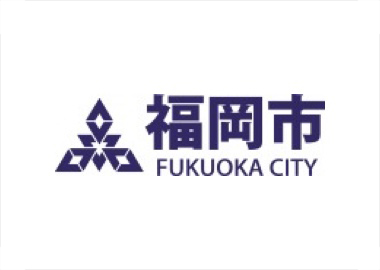Case and interview
Expectations for SenrigaN in local government infrastructure maintenance
Searching for technology to enable efficient inspections
The maintenance and management of bridges that were built in large numbers in the postwar period of high economic growth and that now give rise to concerns about their rapid deterioration is a major challenge for local governments throughout Japan. In addition to these challenges, the city of Fukuoka has many other points that require consideration in terms of the impact that they will have on bridge structures, such as the coastal geography and the highly variable climate, including typhoons; they have therefore been waiting for the appearance of technology to enable management and inspection at low cost, while still securing safety. Amid these circumstances, Fukuoka and Konica Minolta came to conduct demonstrative experiments on the topic of “realizing efficient inspections of bridge deterioration,” through the Cabinet Office Open Innovation Challenge 2019, hosted by the Cabinet Office.
I spoke to the person in charge at the time from Fukuoka City.
(The text below is written based on the contents of interviews conducted by email and telephone.)
The risk of tendon rupture in road bridges is a common issue in structural management for local governments
› Why did you decide to try using SenrigaN?
The first was its economy. The Enforcement Regulations of the Road Act stipulate that regular bridge inspections are to be performed at a frequency of once every five years, and as long as the present system continues, we will incur ongoing costs. Fukuoka manages more than 2,000 bridges, and the costs of inspecting those bridges are quite a substantial amount. We need to reduce these costs, and at the same time, making the work more efficient is also essential. It requires labor as well as money, and inspecting more efficiently is a highly important element. The use of drones and other new technologies is limited by the form of the bridge (bridges that are level under the beam, for instance) and the site conditions, depending on the technology, and we recognize that if we take economy into account as well, inspecting all bridges with drones and other new technologies still has a number of issues.
In our inspection work to date, we have not found any damage giving rise to concerns about tendon rupture, and we did not regard it as a particular problem. However, considering that bridges will age and wear in the future, we realized that technology to detect tendon ruptures will also become necessary. Given this, I want to reduce inspection costs by effectively working through inspections using Konica Minolta’s SenrigaN.
› What was your evaluation of SenrigaN after using it?
Proximal visual inspections, where engineers check for damage by eye or by hitting with a hammer, do not allow an appreciation of the state of ruptures in the internal tendons, but in addition to enabling non-destructive confirmation of internal tendon ruptures, which we cannot check by eye, SenrigaN shows the results in a short time and we were able to demonstrate that even municipal employees can use the instruments easily.
Although we were using SenrigaN for the first time, I felt that we were able to measure with peace of mind while receiving remote support and was attracted by the lightness and ease of use of the instruments. I had the impression that it was also greatly attractive for quickly measuring on site and showing the results straight away. The bridge that we actually measured with SenrigaN was in comparatively good condition, so fortunately we were unable to confirm results that the internal tendons had ruptured, but I feel that we will be able to keep using it in other locations as well. The technology that allows easy confirmation of the state of ruptures in internal tendons without destruction is an epoch-making technology, I feel.

› Have you thought about using new technologies other than non-destructive testing technologies?
Besides the Cabinet Office Open Innovation Challenge 2019, Fukuoka has established mirai@, a one-stop window that promotes the resolution of social issues using advanced ideas and revolutionary technologies like AI and IoT from the private sector, which constantly accepts proposals for “private sector-cooperative enterprises” that generate projects through collaboration with private operators, and in 2020, we conducted demonstrative experiments on technology to support bridge inspections using drones, etc., with the objective of improving the efficiency of inspections.
The demonstrative experiments checked the inspection accuracy and other features of various new technologies, such as drone-based inspection technology, inspection technology using bridge inspection support robots, automatic drawing creation technology, and condition surveillance technology based on monitoring cameras, and we are evaluating them with a view to increasing efficiency and reducing costs in bridge inspections in the future.
› Specifically, what kinds of testing are you thinking about using SenrigaN for in the future?
Through the demonstrative experiment using SenrigaN, I thought that it might be highly effective in detailed surveys in the next step after inspections, such as when we want to survey in more detailed sections with concerns about damage that we discovered in proximal visual inspections. In future, I want to look into making use of SenrigaN in detailed surveys when we find bridges with concerns about internal tendon ruptures in our inspections.
› Tell us about your (long-term) outlook for the future.
Because using SenrigaN makes it possible to discover ruptures in internal tendons earlier and prevent structure dysfunction before it happens, I am hoping to expand it beyond bridges to other road structures as well.


